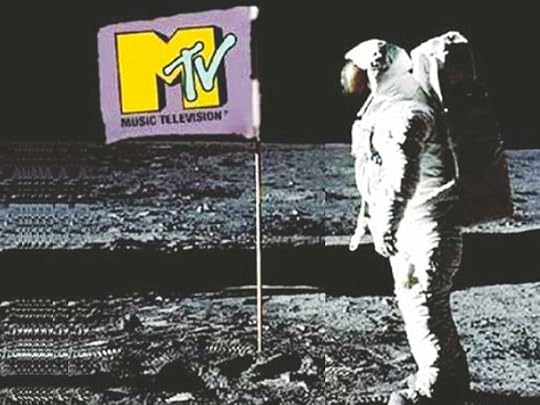I Want My MTV
MTV debuted 40 years ago this week. I saw it happen, and it helped shape the culture of my generation.

I saw it happen when it happened. Mainly because I was a Gen-Xer and was glued to the television, unsupervised. It kept me quiet and occupied. We had cable. I was ten years old. We already had HBO. I remember the first HBO Guide we had had a picture of John Travolta giving his now-iconic finger-pointing pose from Saturday Night Fever on the cover. I watched my first R-rated movie around that time: Animal House. I saw it with dad, so it was ok. That’s the way it was back then. I think I was 10.
I know I was 10 when MTV debuted, four months shy of my 11th birthday. I’d already become obsessive about music by the time MTV came along, and watching music on television was nothing new. I distinctly remember seeing Kiss Meets the Phantom and many installments of Don Kirshner’s Rock Concert (brought to you locally by Woofer and Tweeter). I remember Kirshner’s wide-collared shirts and whiny voice as he introduced some truly kick-ass acts. I was transfixed.

There was also American Top 10 with Casey Kasem where I was first exposed to the world of music videos months before the debut of Music Television. It’s where I first saw Rush, Foreigner (whose album, 4, seemed to be the biggest thing in the world for much of 1981 and ‘82), and many others.
But on August 1st, 1981, here came an entire channel that focused on nothing but music. I was hooked from the start.
Interestingly, I didn’t find myself discovering new bands on MTV as much as I was anticipating the coverage of bands I already loved. Still, I got to see live concerts of everyone from bands I already dug, like AC/DC, to artists I would grow to love, like Frank Zappa. My tastes were always aimed toward rock’n’roll, so it was like Christmas whenever a new band would appear that reflected that taste, from R.E.M. and the Georgia Satellites to, later, the Black Crowes.
Of course, I had to sit through those damn Duran Duran fellas, and the endless array of pop sheen that paraded through, including Madonna et al; artists seemingly tailor-made for the video channel. Yes, the music most times took a back seat to the visuals, a mojor concern from the baby boomers and the radio jocks back then (one of which I became). But I did fall for Prince from the very beginning.
Even the guy I discovered from listening to WQDR playing “Spirit In the Night,” “Growin’ Up,” and “Born to Run,” ended up becoming a video star, too.
Then Michael Jackson appeared after MTV got in hot water for not playing Black artists (most famously called out by David Bowie, seen below chastising a bumbling Mark Goodman) and Thriller became the biggest album in the world.
Later, I went through a metal phase and MTV’s Headbangers’ Ball became required viewing every weekend with my pals.

What started as badass concert footage of bands like Motorhead and Iron Maiden unfortunately turned into the bubblegum pop metal of Poison and bands with names like Trixter. Still, I watched it all, and learned to tolerate and, yes, even really enjoy some of it. (Cinderella was a pretty good blues-rock band if you forgot all about the existence of all the other blues-rock bands that came before them, for example.)
The local college station at NC State University, WKNC, aired an all-metal show called Chainsaw Rock that was a perfect supplement to HBB. In that respect, their show, Night Wave, was complimented on MTV by 120 Minutes. That’s where I was first exposed to everyone from The Cure to Sonic Youth and XTC.

It’s a pointless cliche to gripe about how MTV no longer plays music; they’ve been non-music television now longer than they were music television. Still, they were at the forefront of the culture for the entire decade of the ‘80s, and let’s not forget their fantastic Unplugged series. Everyone from Eric Clapton to Lauryn Hill to Nirvana had defining moments on that stage.
As the years went by I found myself gravitating toward the more boomer-friendly MTV off-shoot, VH1, where artists that I adored including Bonnie Raitt and Little Feat, found a home on their playlists before the onset of Adult Alternative Radio.

Even though they’re not even a shell of their former selves now, airing nothing but block programming of the horrible Ridiculousness and even worse, 16 and Pregnant, MTV’s legacy is still intact for maybe not killing the radio star, but giving them a fresh platform on which to show off what they had - some, like Whitesnake, benefitted greatly, thanks in no small part to the late, great Tawny Kitaen and her peerless Jag dance.
So Happy 40th, MTV. You’ve aged like most of us middle-aged folks: you’re not what you used to be, maybe not as sharp, but you’re still around and still being talked about, which is all one can hope for.



